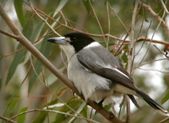Nutrition
Specific nutrition information on Gastrocopta tappaniana is not known at this time.
Although some snails are scavengers and carnivores, most terrestrial land snails are herbivores, eating algae, fungi, plants and leaves.
Some snails even grind bits of soft stones such as limestone in order to get calcium. Calcium is a vital nutrient needed in order to build the snail's shell. The calcium gets absorbed and used by the mantle to secrete the shell (Snail Diet and Feeding Habits, 2011).
In order to eat, the snail uses its radula, a rasping organ that can scrape food and act like a conveyor belt and carry the food inside the mouth. The radula contains thousands of fine teeth made of chitin to aid in eating (Hickman, 2009).
Once the food is inside, the food passes through a complete digestive tract consisting of a stomach, digestive gland, and intestine (Illinois Department of Natural Resources, 2009). After nutrients get absorbed, the leftover metabolic wastes as well as excess water are removed from the coelomic fluid by a pair of nephridia. The nephridia are sometimes referred to as the kidneys but work in a different manner as they filter coelomic fluid instead of blood (Hickman, 2009).
While snails are fairly small animals, they are still preyed upon by other animals. Such predators include salamanders, small mammals, birds and even insects (Illinois Department of Natural Resources, 2009).
Back to Home Continue to Interactions

